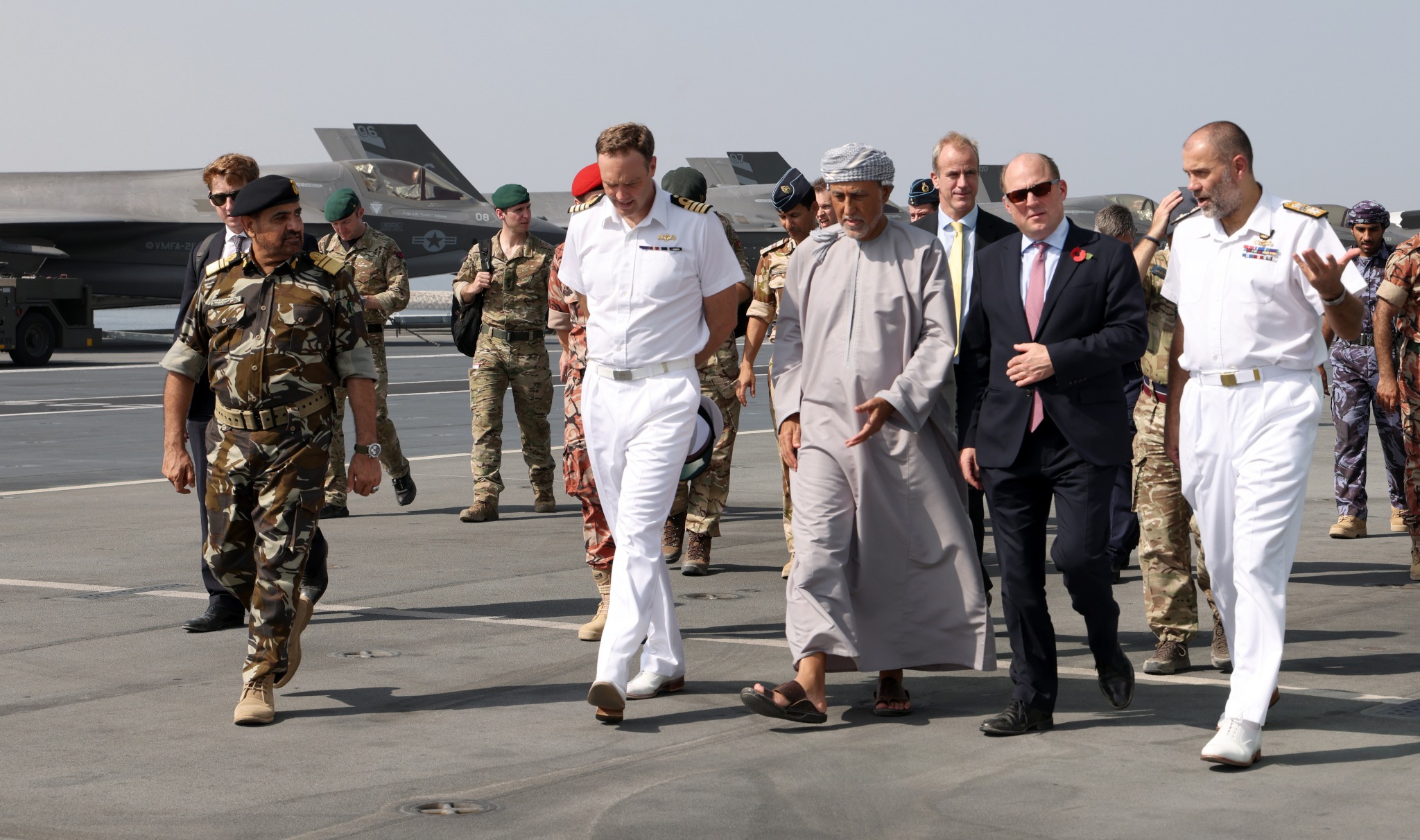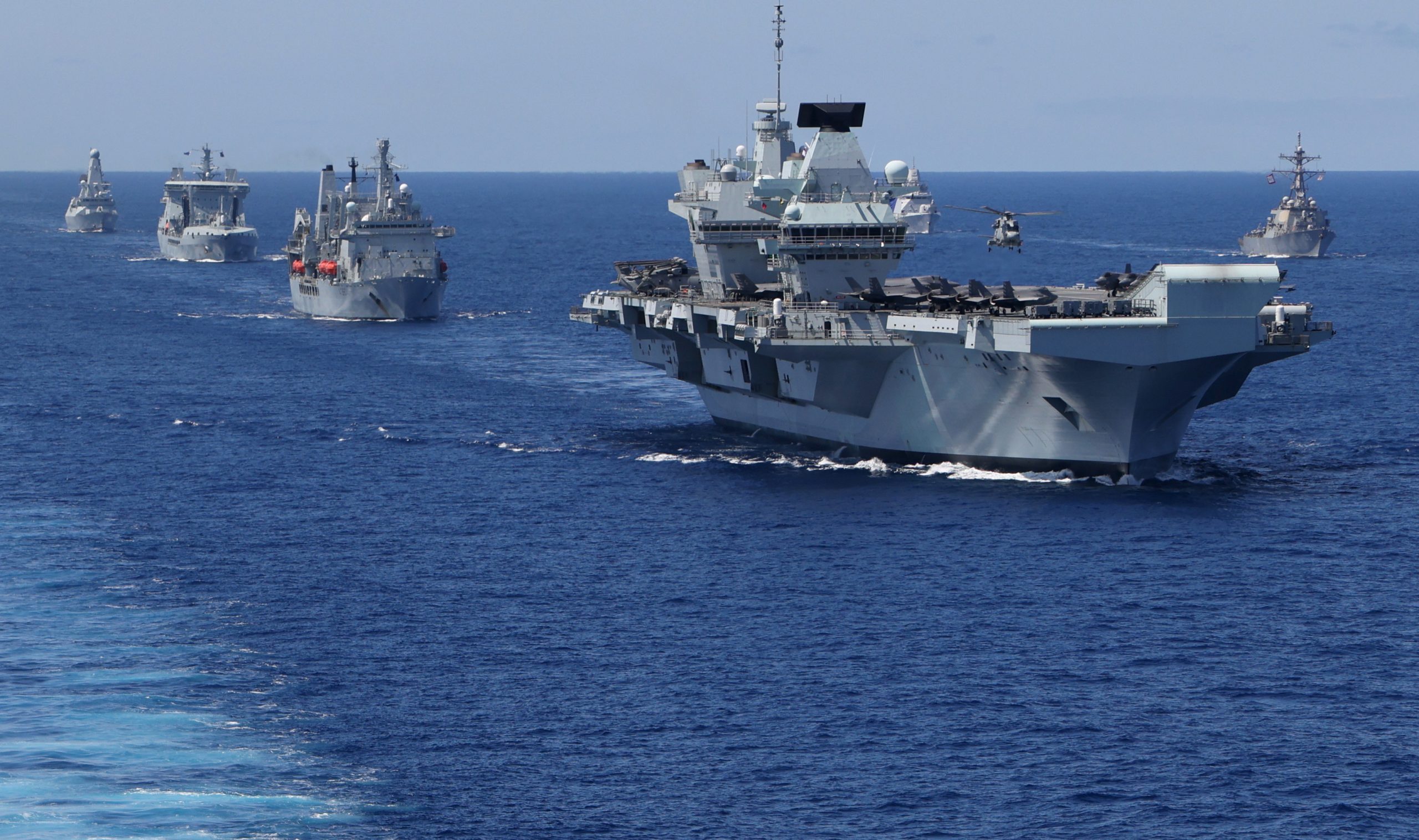The Royal Navy is sending an aircraft carrier far further on her maiden mission than parliament was told, Declassified can reveal.
HMS Queen Elizabeth has clocked up an extra 10,000 nautical miles on her round trip to China. And she’s still 5,000 nautical miles from home.
The additional distance raises the ship’s fuel bill and carbon emissions by at least 58%. It comes amid a climate crisis and record oil prices, with millions of families facing fuel poverty this winter.
Defence secretary Ben Wallace told parliament in April: “Over the coming 28 weeks, from May to December 2021, we will see our carrier strike group travel over 26,000 nautical miles.”
In late October, Alba MP Kenny MacAskill was told by Wallace’s deputy the carrier had already exceeded that distance.
Defence minister James Heappey said: “To date, HMS Queen Elizabeth has travelled over 27,000 nautical miles during her maiden Carrier Strike Group deployment.”
It has now emerged that MacAskill was only given the mileage up to the end of September.
The ship has actually travelled 36,000 nautical miles. The true figure was given to Declassified by a nuclear submarine commander in the Ministry of Defence press office, responding to our query.
Reacting to our revelation, MacAskill commented: “It was a straightforward question but an answer shrouded in fog. It’s not that hard to chart the course or record the distance.”
MacAskill, a former Scottish justice secretary, added: “The difference is substantial and clarity is required. The ministerial answer was far from accurate and that itself raises more questions.”
The navy sent the carrier as far as Guam, a US territory in the Pacific. There, two British sailors were arrested over a drunken brawl where one allegedly groped a woman.
Burning money
HMS Queen Elizabeth has a range of 10,000 nautical miles and can carry four million litres of marine diesel. This much fuel costs around £2.2 million, based on prices paid by the US military.
Burning it all emits 10,000 tonnes of carbon dioxide and requires planting 165,000 trees to offset.
The carrier’s round trip to China is likely to total over 40,000 nautical miles, which could cost nearly £9 million in fuel costs. This does not include the significant amount of jet fuel used by the ship’s aircraft.
“The ministerial answer was far from accurate and that itself raises more questions”
Kenny MacAskill MP
When Labour MP Geraint Davies challenged Wallace on the fuel costs ahead of the voyage, the minister said: “The carrier is paid for, deployed, fuelled and ready to go.”
But he added: “No plan survives the very first contact, so who knows where we will be at the end of the year, if they are diverted and we do something else?”
Wallace then wrote to Davies saying the navy’s initial estimate of deploying the carrier group to Asia was £63 million. This figure excludes aircraft costs.
The carrier is currently moored at Duqm port in Oman, a repressive Gulf dictatorship. BBC and Sky journalists were flown out to visit the ship but did not question fuel costs or carbon emissions.
Sky News said navy pilots it spoke to were “hyped up” from frequent encounters with Russian jets in the Mediterranean. But the aviators felt “a bit let down” and “frustrated” that Chinese aircraft had stayed further away.



